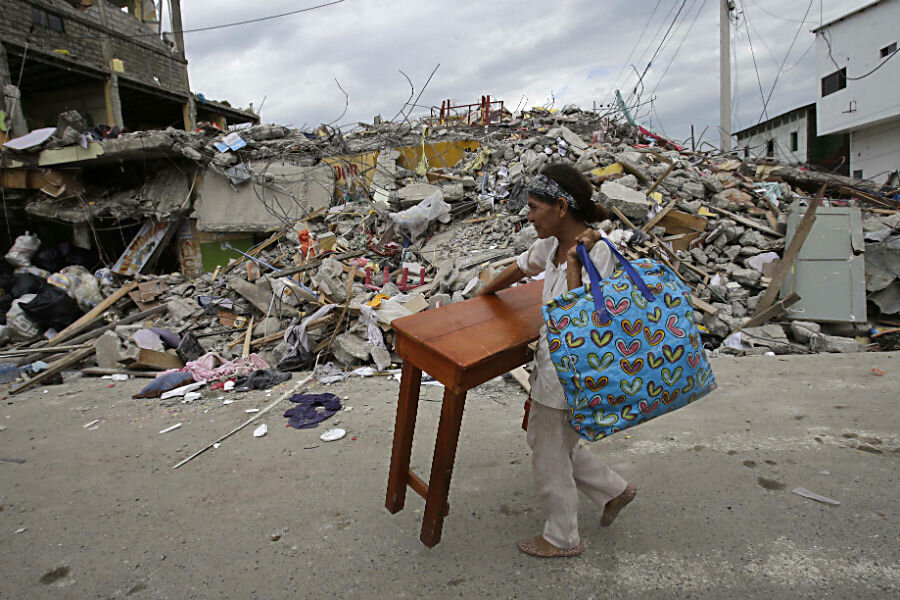Ecuador earthquake: How to help?
Loading...
The massive earthquake that struck Ecuador Saturday was 16 times more powerful than one of the two temblors that struck Japan over the weekend, leaving the Latin American country relatively calm, but in desperate need of help.
The magnitude 7.8 quake killed at least 350 people, left more than 2,000 injured and left up to 100,000 in need of some kind of help as surrounding countries and international relief organizations rallied to provide aid.
The Spanish Red Cross estimated around 3,000 to 5,000 people would require temporary housing.
Ecuador's Geophysics Institute said around 230 aftershocks had occurred by Sunday night that varied in magnitude from 3.5 to 6.1 and hit at shallow depths – which tend to be more damaging, according to the Associated Press.
Ecuador's President Rafael Correa, who returned early from a visit to Italy, observed the damage in the coastal province of Manabi on Sunday night.
"Ecuador has been hit tremendously hard," President Correa said in a televised address as his voice cracked, adding that he was concerned the death toll would rise.
Governmental and aid organizations began emergency assistance in the form of finances, supplies, and search and rescue teams, with many detailing ways individuals around the world could assist.
Nations including Venezuela, Chile, and Mexico have sent personnel and supplies.
The Ecuadorean Red Cross has more than 800 volunteers and staff working on the crisis and Medecins Sans Frontieres is sending a team from Colombia, Reuters reported.
For people wanting to help, the list included monetary donations, blankets and machinery according to Bustle.
By Sunday, teams from relief organizations around the world, including UNICEF, Oxfam, and the Red Cross, were gearing up to help Ecuador. Some organizations, like CARE, set up specific donation portals for the Ecuador cause, while others asked concerned people to donate to a general relief fund. For instance, World Vision, which focuses specifically on supporting children's causes, directed interested donors to its Disaster Relief Fund portal, where the organization identified that it was responding to the situation in Ecuador. The Adventist Development and Relief Agency (ADRA) advised people to donate to via its emergency donation page. And Ecuador's local Cruz Roja provided information on how to donate directly to them," Bustle reported.
Bustle also reported that for those outside of Ecuador it can be expensive and logistically difficult to send the kinds of everyday goods and household items needed after a disaster. However, 20 youth community activists called Global Shapers Quito have created a donation page to raise money specifically for items such as blankets, clothing, canned food, and mattresses.
According to NBC, 10,000 military personnel and 3,500 police had been deployed to maintain law and order in Ecuador following the quake.
Around 130 inmates escaped from a Portoviejo’s low-security El Rodeo prison by climbing over the facility's destroyed walls, taking advantage of the chaos. By Sunday night, authorities said more than 35 prisoners had been re-detained.
Geological scientists said it is still too early to determine whether the Ecuadorian quake and the two that struck Japan over the weekend are connected, although they did both occur within the so-called "ring of fire," CNN reported. The infamous ring stretches in a roughly horseshoe shape from the South American coast across the top of the Pacific and down over South East Asia to New Zealand.
This report contains material from Reuters.








